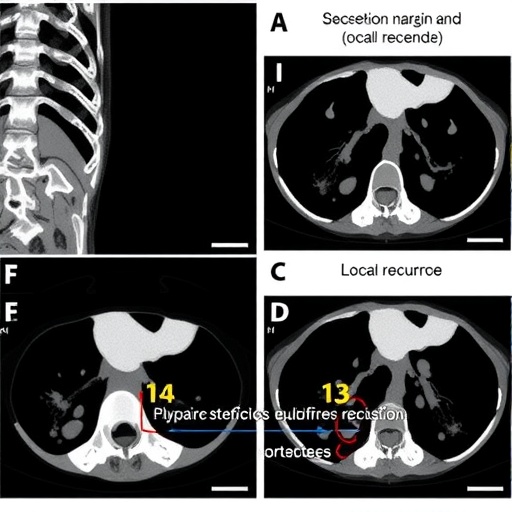In the relentless battle against antibiotic-resistant superbugs, methicillin-resistant Staphylococcus aureus (MRSA) represents one of the most formidable threats to global public health. Its notorious ability to evade conventional antimicrobials has fueled severe infections that are increasingly difficult to treat with existing therapies. However, a pioneering study, recently published in Nature Biotechnology, unveils an innovative approach that could redefine how we address these persistent bacterial invaders. By inducing bacterial calcification through a sophisticated antibody-polysialic acid conjugate, researchers have demonstrated not only potent antibacterial activity against MRSA but also an intriguing capacity to modulate the host immune system, opening new horizons for combating drug-resistant pathogens.
At the core of this groundbreaking work lies the strategic exploitation of MRSA’s own cellular architecture. The research team engineered a conjugate molecule by crosslinking antigen-binding fragments derived from monoclonal antibodies targeting the wall teichoic acid (WTA), a key surface polymer on S. aureus, with polysialic acid (PSA). This antibody–PSA conjugate effectively homes in on MRSA’s cell wall, orchestrating an artificial calcification process directly on the bacterial surface. Intriguingly, this calcification is not merely a superficial coating; it fundamentally disrupts bacterial physiology, particularly striking at the core of the pathogen’s energy metabolism and various essential metabolic pathways.
Bacterial calcification, a phenomenon not typically associated with S. aureus, appears to induce structural rigidity and metabolic collapse within the pathogen. By interfering with MRSA’s homeostasis, the calcification stifles its ability to generate ATP robustly and maintain critical biosynthetic functions, which are vital for its survival and proliferation. This metabolic paralysis leads to an effective bacterial eradication mechanism that circumvents the traditional routes targeted by antibiotics, potentially mitigating the development of further resistance.
.adsslot_jsxwDTu7Fi{ width:728px !important; height:90px !important; }
@media (max-width:1199px) { .adsslot_jsxwDTu7Fi{ width:468px !important; height:60px !important; } }
@media (max-width:767px) { .adsslot_jsxwDTu7Fi{ width:320px !important; height:50px !important; } }
ADVERTISEMENT
Beyond the bactericidal effects, the study reveals compelling immunomodulatory outcomes induced by this novel therapeutic strategy. In vivo experiments demonstrated that bacterial calcification stimulates the upregulation of calprotectin proteins—specifically S100A8 and S100A9—in macrophages and monocytes. Calprotectin, known for its role in immune defense, acts here as a biomarker and mediator of the enhanced inflammatory response. Activation of macrophages into a more inflammatory state facilitates heightened immune surveillance and clearance capabilities, bolstering the host’s natural defenses alongside the direct bactericidal activity of the conjugate.
The dual-action mechanism—combining direct bacterial killing with immune system empowerment—represents a paradigm shift in anti-infective therapy. This synergy not only ensures more thorough elimination of the pathogen but also mitigates potential relapse or chronic infection scenarios often seen in MRSA-infected hosts. Chronic lung infections and osteomyelitis, notoriously difficult to eradicate and frequently complicated by biofilm formation, responded remarkably well to systemic administration of the antibody-PSA conjugate in murine models, suggesting strong translational potential.
Safety profiles evaluated in animal models underscore the therapy’s promise for human applications. Despite inducing inflammatory activation, the treatment avoids excessive immunopathology or cytotoxicity, maintaining a fine balance between effective immune stimulation and host tissue preservation. Such a therapeutic window is crucial for chronic infection management where prolonged treatment courses are typical and adverse effects can severely compromise patient outcomes.
From a molecular perspective, this study elegantly integrates biochemical targeting with sophisticated nanobiotechnology. The antibody fragment ensures exquisite specificity to MRSA surface antigens, minimizing off-target effects and collateral damage to beneficial microbiota. The conjugation with polysialic acid further enhances bioavailability and may facilitate penetration into biofilm-embedded bacterial communities, an Achilles heel for many antimicrobial agents.
Moreover, this strategy illustrates the untapped potential of nontraditional antimicrobial mechanisms. By leveraging induced mineralization, the approach sidesteps classic antibiotic resistance pathways such as beta-lactamase activity or efflux pumps. It forces the bacteria into a physiologically untenable state, akin to being trapped in a “calcified cage,” which prevents their normal metabolic functions without relying on traditional chemical sabotage.
The implications for tackling other multidrug-resistant organisms are profound. While this study focused on MRSA, the conceptual framework—targeted antibody conjugates inducing pathogenic calcification—could extend to a broad spectrum of bacterial pathogens possessing analogous surface molecules. This opens exciting avenues for platform technologies designed to turn bacterial structures against themselves, integrating biological precision with chemical innovation.
Importantly, this research also underscores the critical interplay between pathogen clearance and immune system dynamics. The immunomodulatory effects observed may help overcome immunosuppression often induced by chronic infections, reinvigorating innate immunity to achieve comprehensive pathogen eradication. This likely reduces the risk of persistent infections and supports tissue healing, critical factors for improving patient prognosis.
Looking forward, the translational path from murine models to clinical application will require meticulous optimization of dosing regimens, conjugate stability, and immune response modulation in human subjects. Nonetheless, the robust proof-of-concept data offer a compelling rationale to advance this therapy into early-phase clinical trials. Collaboration across immunology, microbiology, and pharmaceutical sciences will be pivotal to harness this technology’s full potential.
In the broader context of antimicrobial innovation, this approach exemplifies the necessity of thinking beyond classical drug discovery paradigms. Faced with escalating antibiotic resistance, the integration of immunomodulation and synthetic biology tools introduces a new frontier in anti-infective therapeutics that could rejuvenate our armamentarium against superbugs.
The exciting discovery by Zhang and colleagues represents a beacon of hope in a landscape shadowed by persistent drug resistance. As the scientific community grapples with evolving bacterial threats, strategies that co-opt bacterial metabolism and harness immune machinery offer a refreshing and powerful direction. If successfully translated to human medicine, inducing bacterial calcification might well become a key weapon in the fight against MRSA and other resistant infections, ultimately saving countless lives worldwide.
Subject of Research: Innovative therapeutic strategy targeting methicillin-resistant Staphylococcus aureus by inducing bacterial calcification and modulating host immune response.
Article Title: Inducing bacterial calcification for systematic treatment and immunomodulation against methicillin-resistant Staphylococcus aureus.
Article References:
Zhang, W., Liu, L., Zhang, Q. et al. Inducing bacterial calcification for systematic treatment and immunomodulation against methicillin-resistant Staphylococcus aureus.
Nat Biotechnol (2025). https://doi.org/10.1038/s41587-025-02736-3
Image Credits: AI Generated
Tags: antibiotic-resistant superbugsbacterial calcification techniquescellular architecture exploitationhost immune system modulationinnovative antimicrobial approachesmetabolic disruption in bacteriamonoclonal antibody applicationsMRSA treatment strategiesNature Biotechnology research findingspolysialic acid conjugatesStaphylococcus aureus infections






